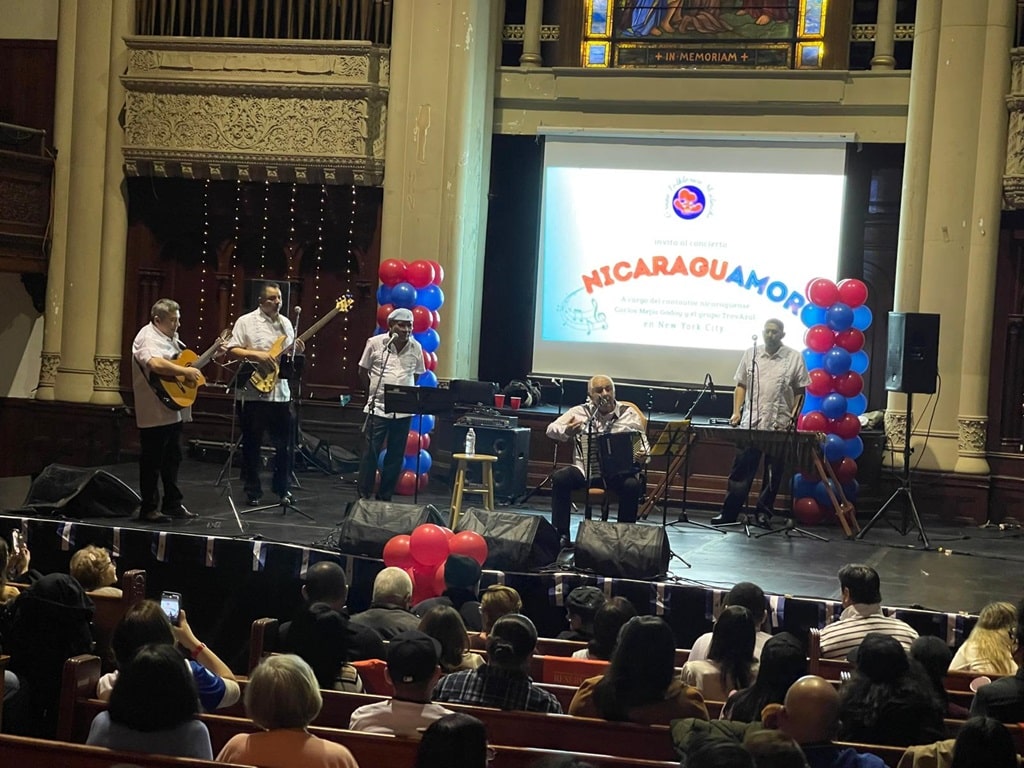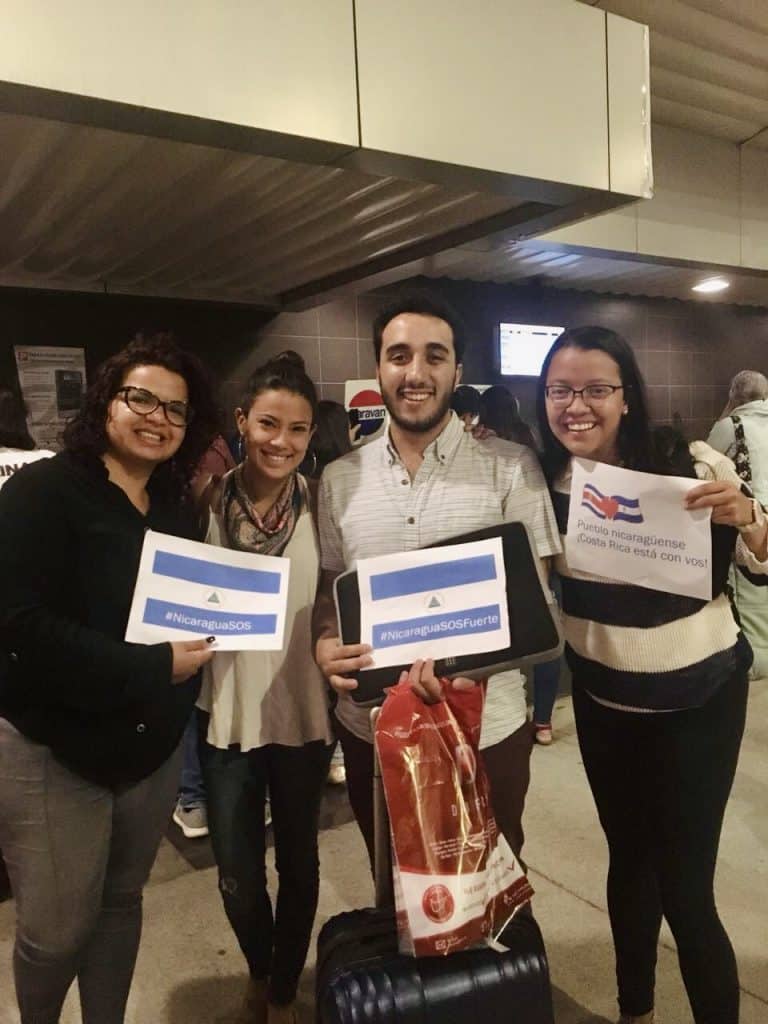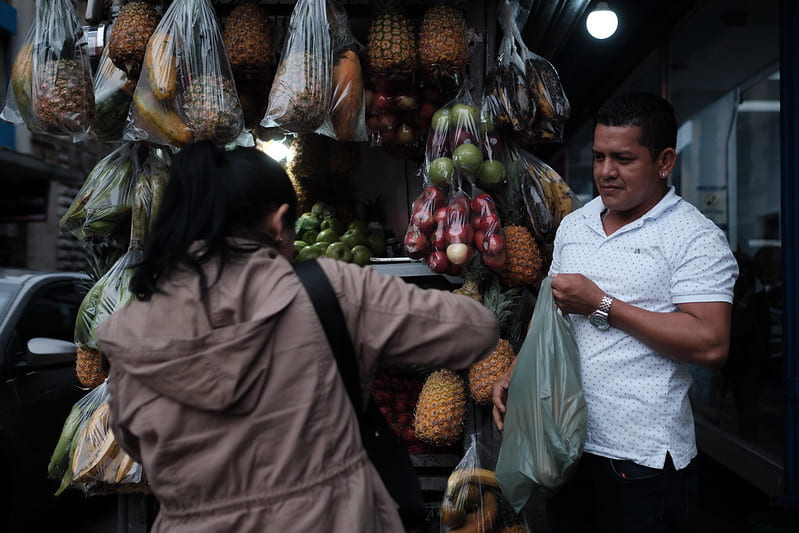9 de abril 2024

“NicaraguAmor” Cultural Caravan for Nicaraguans in the USA

PUBLICIDAD 1M
PUBLICIDAD 4D
PUBLICIDAD 5D
In considering the country “exceptional,” some Costa Ricans may unconsciously reject the idea of deeper consolidation with the immigrant population

I never felt myself to be the “other” until I emigrated to Costa Rica. I’d never imagined that leaving one’s own country to install oneself in a foreign land redefines identity, and, sometimes, even one’s purpose in life. At least, that’s what happened in my case.
I arrived in 2015 from Nicaragua to this neighboring Central American country with a suitcase filled with illusions about this new stage of life I was beginning along with my husband as a result of his work transfer. He is Canadian and I’m Nicaraguan, and together we began, bit by bit, as foreigners, discovering and falling in love with our new home: this small paradise visited by millions of people from around the world each year, because of its exuberant and green nature, as well as its reputation as the region’s role model—one of the few countries in the world without an army and with a prolonged history of democracy, peace and stability.

But, in the suitcase, I also carried certain doubts. After all, Costa Rica was also a place where at least 300, 000 fellow countrymen had arrived before me for decades, fleeing poverty, dictatorships, a civil war, earthquakes and hurricanes. In the news, I’d read that these migrants sent remittances to family members in Nicaragua. I’d also heard about the mistreatment some suffered just because they were Nicaraguan, about hostility between Nicas and Ticos (as Costa Ricans are called) because of political tensions along the border; I heard about the exploitation of those who came seeking work in the coffee or pineapple fields or as security guards, maids and construction workers.
We were “the others,” the largest foreign population in the country, arriving to do the jobs that the average Tico, with better education and resources, no longer wanted to do. We were, for some, the poor, brown-skinned, simple, inferior, but also sometimes perceived as criminal threats. There’s even a popular saying, “Don’t act like a Nica,” as Carlos Sandoval, an expert on migratory themes, explains.

In 2005, this hostility reached its peak when an indigent Nicaraguan, Natividad Canda, was torn to pieces by three dogs when he trespassed in a car repair shop to rob aluminium; police and others who witnessed the attack stood by and did nothing, according to media reports. The event set off heated debates and xenophobic expressions about Nicaraguan migrants in Costa Rica.
Ten years later when I arrived, the mood seemed more friendly, at least in my social environment. What I did find were micro-aggressions of “furtive xenophobia,” as a Nicaraguan college student recounted when I interviewed her in my first months here. I remember the surprise of some Costa Ricans when they found out I was Nica and spoke fluent English. I received “compliments” such as “Oh, you’re Nica, but you express yourself very well” or “Oh, you’re Nicaraguan? You don’t seem to be.” And, of course, at the same time, there were—and are—aggressions, insults and open xenophobic attacks suffered by other Nicaraguans, generally those in disadvantaged economic and social conditions, because xenophobia goes hand-in-hand with racism and class discrimination here and in all parts of the world.
Class, race and nationality figures into how foreigners are treated in Costa Rica, differences that become more evident in contrasting the experience of Central American migrants with that of those from Europe and the United States who settle in a permanent fashion in the more touristic zones. These “expats,” as they call themselves, to differentiate from other migrants, who come to Costa Rica to retire, to buy houses or start businesses, are generally well-received and there’s seldom any discriminatory expressions against them in the public debate.
The government has recently promoted a law for digital nomads, intended to attract, especially after the pandemic, foreigners earning at least US$3,000 monthly who wish to live and work remotely in Costa Rica.
There’s a saying that, supposedly, reflects a certain Costa Rican idiosyncrasy: “A Tico invites you home, but never gives you the address,” a refrain repeated with a sense of humor even by Costa Ricans themselves. I have very good Tico friends, who indeed gave me their addresses. They are people interested in understanding my reality as a migrant and a Nicaraguan, with whom I have created strong bonds based on admiration and mutual respect.
The kindness, solidarity and genuine welcome of the majority of Costa Ricans through moving gestures caused my reservations to dissipate. I remember, for example, the night of April 20, 2018, when I had to interrupt a visit to Managua because of the beginning of the massive citizens’ protests that were brutally repressed by the Daniel Ortega-Rosario Murillo regime. Chaos had taken over Nicaragua. Yet that night was only the beginning of long and exhausting months that have become six years of a serious socio-political and human rights crisis. When I returned to Costa Rica scared and with an aching heart, Costa Rican friends met me in the airport with signs of support and warm hugs.
I wasn’t the only one the Ticos gave their welcome to at that time. In 2018, Costa Rica became, together with the United States, one of the main destinations for the tens of thousands of Nicas who had fled because of the repression and the economic crisis resulting from politics.

Over time, my migrant identity and my journalistic identity joined forces to feel the necessity of narrating the experiences of those Nicaraguans who, leaving their homeland, became invisible and stereotyped “others.” We had to say who we were and how we were experiencing life in our new homes, we had to show how we were part of Nicaraguan society and part of the society that had taken us in, and we had to extend a bridge so the Nicas inside and outside the country would recognize each other. I assumed this mission as a personal cause.
Through the intense coverage we have developed in Nicas Migrantes of Confidencial, an online Nicaraguan newspaper publishing in exile from Costa Rica, I’ve been able to see up close the Costa Rican duality in its treatment of foreigners, who now make up 15% of its total population of five million.
In spite of being an important population for its size and economic contributions, adding more that 12% to the Gross Domestic Product (GDP), according to estimates by the Organisation for Economic Cooperation and Development (OCED) and the International Labour Organization (ILO), at the present time, a clear and consistent policy for migration and integration is non-existent,nor has one been discussed in the past few years, as it is pointed by Daguer Hernández, the assistant director of the Office of Migration and Foreign Nationals (DGME) between 2018 and 2022.

Indeed, Costa Rica has a historic tradition of taking in asylum seekers and refugees of different nationalities, a fact that is confirmed by the 200,000 requests for refugee status that have accumulated since 2018, most of them from Nicaraguans. But, unfortunately, that is not enough.
Because of the enormous quantity of requests, the Unit for Refugees will take many years to process them and, in the meantime, those in the country with pending asylum cases, find themselves coping with the obstacles established at the end of 2022 by President Rodrigo Chaves, who asserted that economic migrants were taking advantage of the asylum system.

Before that, he had complained that these migrants were a burden and that the international community was not providing enough support through donations to take care of them.
This rhetoric from the position of power that categorizes migrants as a burden is mistaken, since those economic migrants not only are an important percentage of the productive work force in several sectors of the Costa Rican economy, but they also pay taxes and cover the costs of living in the country, which is the most expensive in Central America. These migrants who come to work do not have easy access to state assistance unless they have legal migratory status. As a matter of fact, those migrants with irregular status are exploited or their laboral rights are not recognized. Frequently, their bosses do not enroll them in the Costa Rican Social Security Fund, the public health system that only takes care of its insured members, with the exception of children and pregnant women, who are treated independently of their nationality or migration status. President Chaves’ declaration also did not take into account that Nicas are an essential work force in the production of products such as pineapple (Costa Rica is the top exporter in the entire world), or in the coffee harvest (known internationally for its high quality), as well as in many other areas of the economy.

A migratory policy that seeks to achieve the integration of the foreign population would pursue a massive legalization of status so that authorities could have an exact and complete record of who lives in the country. It would permit migrants to work in a formal manner with complete rights and obligations, as Hernández has urged. Unfortunately, 25 years have gone by since the last massive legalization of immigrants in Costa Rica, when in 1999, Central American migrants received amnesty as a humanitarian gesture, after Hurricane Mitch reaped its destruction on the isthmus.
In January, the government announced the creation of a National Migration Strategy, which hopefully will be the integrated response we all long for.
When I first arrived in Costa Rica, I noticed there was very little media representation of the Nicaraguan immigrants. Despite the fact we were everywhere, as workers, neighbors and family, the Nicaraguan population was quite invisible, and if we were mentioned, it was frequently stereotyped and negative. It seemed strange to me, for example, that the largest and most important newspaper in the country didn’t have a section on migration, since Costa Rica is one of the Latin American nations with the greatest number of immigrants relative to its size. There are also no disaggregated official statistics that take into account in a particular and deep manner how the characteristics of migrants impact the quality of life of most residents.

During the most recent electoral campaigns, I also didn’t see any special emphasis on the migratory issue, and in the 2022 election, only one political party included the immigrant population, together with Costa Ricans, across the board and in an explícit manner, in its platform. A fortunate difference between Costa Rica and other countries is that, as yet, there have been no election campaigns in which candidates stoke xenophobia, a current trend in the United States and Europe, where populisms use migrants as a scapegoat for all of society’s evils.
For Alberto Cortés Ramos, professor at the Universidad de Costa Rica (UCR), the gap in integration of immigrants occurs because Costa Rica defines its citizens in terms of their nationality and not by the act of residing in its territory. I would add here that, perhaps, another obstacle to full integration of migrants, is the existence of an overwhelming nationalism that doesn’t leave room to celebrate the plurality and integration of other cultural identities although, as a matter of fact, through decades of this flow of Nicaraguan migrants, we have seen an increasing blend of our ways of talking, our food and traditions, and even more important, our people. We see it in the daily coexistence of neighbors, friends and colleagues, the thousands of binational families—Nica and Tico—that have been formed over the decades.
I ask myself if, perhaps, some Costa Ricans, in considering the country “different” or “exceptional,” unconsciously reject the idea of a deeper consolidation with the immigrant population, in its majority Nicaraguan, because this would imply being more like the rest of Central Americans. Iván Molina, a UCR historian, explains, precisely, that Costa Rican identity “is constructed against the mirror image of the rest of Central America.” The so-called myth of Costa Rican whiteness, mentioned in Molina’s article, still exists, although with less force. There was a time, Molina points out, when asked why Costa Rica was different from Central America, the answer was inevitable “because Costa Rica is white.” What is certain is, like the rest of its neighbors on the isthmus, Costa Rica is mixed race and multicultural. In 2015, the Costa Rican constitution recognized the country as “multiethnic and multicultural,” an important advance in its self-perception as a diverse nation.
But I remain optimistic and I return to those gestures that have moved me and say a lot about the Ticos. In 2018, with the massive arrival of Nicaraguans, a xenophobic and violent protest took place in La Merced, a San José park known as the “park of the Nicas.” I remember the worry and fear of many Nicaraguans, but also the outrage of many Costa Ricans, which was manifested both in actions and words. A few days later, there was a huge counter-protest to the anti-immigrant demonstration, and hundreds of people with Nicaraguan and Costa Rican flags marched along the main streets of San José, chanting, “Side by side, hand in hand: Ticos and Nicas are brothers!” This, for me, is the best way of saying how Costa Ricans are different. And I want to hang on to that difference: worthy of celebration and imitation.
*This article was first published by ReVista, Harvard Review of Latin America.
Cindy Regidor is the founder and editor of Nicas Migrantes in Confidencial. A Nicaraguan journalist based in Costa Rica since 2015, she has 16 years of experience in the print and digital media, as well as television. She has a Master’s in Communication and Studies of Peace and Conflict. E-mail: [email protected]
PUBLICIDAD 3M
Periodista nicaragüense desde 2007, con experiencia en prensa escrita, televisión y medios digitales. Tiene una especialización en producción audiovisual y una maestría en Medios de Comunicación, Estudios de Paz y Conflicto de la Universidad para la Paz de las Naciones Unidas. Fundadora y editora de Nicas Migrantes, proyecto por el cual ganó el Impact Award 2022 del Departamento de Estado de EE. UU. Ha realizado coberturas in situ en Los Ángeles (Estados Unidos), México, El Salvador, Guatemala, Nicaragua y Costa Rica. También ha colaborado con France 24, The Guardian, Al Jazeera, BBC World Service. Ha sido finalista y ganadora de varios premios nacionales e internacionales, entre ellos el Premio Latinoamericano de Periodismo de Investigación Javier Valdez, del Instituto Prensa y Sociedad (IPYS), 2022.
PUBLICIDAD 3D